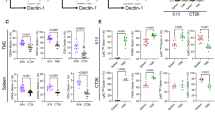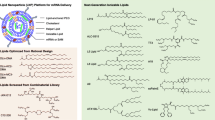Abstract
Toll-like receptor 3 has been targeted in different cancers for adjuvant therapy. The ligand-mediated effects of TLR-3 on cancer cells are discordant. In the present work, we have addressed the hypothesis possibility of cell membrane-bound action of TLR-3 in breast cancer to justify its pro-tumor effect. TLR-3 was stimulated by Poly (I:C) on the surface of human breast cancer cells MCF-7 and MDA-MB-231 for up to 72 h. To check the cell survival and growth, thiazol blue tetrazolium bromide (MTT) assay, apoptosis assay, and cell cycle analysis were carried out. For changes in the metastatic properties, in vitro colony formation assay, scratch-wound healing assay and adhesion assay were also done. Using real-time PCR and immunocytochemistry, expression of E-cadherin, was studied. To determine the affect of cytoplasmic stimulation, Poly (I:C) was delivered with lipid transfection reagent. The results of the aforesaid experiments showed that there was a gradual increase of cellular survivability, growth, and metastasis after the cell surface stimulation of TLR-3 with Poly (I:C). Interestingly, E-cadherin expression was increased both at transcriptional and translational level. On the other hand, when Poly (I:C) was delivered in the cytoplasm by lipid transfecting medium, the cells survivability was decreased. For the first time, in the present work, we are convincingly reporting the functional evidence that TLR-3 induces cell survivability and metastasis through cell surface. The present work may help for the proper understanding of the adjuvant therapy of breast cancer.










Similar content being viewed by others
References
Matsumoto M, Kikkawa S, Kohase M, et al. Establishment of a monoclonal antibody against human Toll-like receptor 3 that blocks double-stranded RNA-mediated signaling. Biochem Biophys Res Commun. 2002;293:1364–9.
Baxevanis CN, Voutsas IF, Tsitsilonis OE, et al. Toll-like receptor agonists: current status and future perspective on their utility as adjuvants in improving anticancer vaccination strategies. Immunotherapy. 2013;5:497–511.
Gribar SC, Anand RJ, Sodhi CP, et al. The role of epithelial Toll-like receptor signaling in the pathogenesis of intestinal inflammation. J Leukoc Biol. 2008;83:493–8.
Grote K, Schütt H, Schieffer B. Toll-like receptors in angiogenesis. Sci World J. 2011;11:981–91.
Hasan UA, Trinchieri G, Vlach J. Toll-like receptor signaling stimulates cell cycle entry and progression in fibroblasts. J Biol Chem. 2005;280:20620–7.
Huang B, Zhao J, Unkeless JC, et al. TLR signaling by tumor and immune cells: a double-edged sword. Oncogene. 2008;27:218–24.
Basith S, Manavalan B, Yoo TH, et al. Roles of toll-like receptors in cancer: a double-edged sword for defense and offense. Arch Pharm Res. 2012;35:1297–316.
Kelly MG, Alvero AB, Chen R, et al. TLR-4 signaling promotes tumor growth and paclitaxel chemoresistance in ovarian cancer. Cancer Res. 2006;66:3859–68.
Szczepanski MJ, Czystowska M, Szajnik M, et al. Triggering of Toll-like receptor 4 expressed on human head and neck squamous cell carcinoma promotes tumor development and protects the tumor from immune attack. Cancer Res. 2009;69:3105–13.
He W, Liu Q, Wang L, et al. TLR4 signaling promotes immune escape of human lung cancer cells by inducing immunosuppressive cytokines and apoptosis resistance. Mol Immunol. 2007;44:2850–9.
Cai Z, Sanchez A, Shi Z, et al. Activation of Toll-like receptor 5 on breast cancer cells by flagellin suppresses cell proliferation and tumor growth. Cancer Res. 2011;71:2466–75.
Chiron D, Pellat-Deceunynck C, Maillasson M, et al. Phosphorothioate-modified TLR9 ligands protect cancer cells against TRAIL-induced apoptosis. J Immunol. 2009;183:4371–7.
Salaun B, Zitvogel L, Asselin-Paturel C, et al. TLR3 as a biomarker for the therapeutic efficacy of double-stranded RNA in breast cancer. Cancer Res. 2011;71:1607–14.
Matsumoto M. Seya T.TLR3: interferon induction by double-stranded RNA including poly(I:C). Adv Drug Deliv Rev. 2008;60:805–12.
Phase I oncovir poly IC: LC and NY-ESO-1/gp100. (Clinical trails under U.S. National; Institute of Health) http://clinicaltrials.gov/show/NCT01008527.
Huang YK, Zheng Z, Cheng CX, et al. The antitumor effect of the Toll-like receptor 3 ligand polyinosinic-cytidylic acid as an adjuvant. Cancer Immunol Immunother. 2013;62:237–44.
Harashima N, Inao T, Imamura R, Okano S, Suda T, Harada M. Roles of the PI3K/Akt pathway and autophagy in TLR signaling-induced apoptosis and growth arrest of human prostate cancer cells. Cancer Immunol Immunother. 2012 (in press).
Inao T, Harashima N, Monma H, Okano S, Itakura M, Tanaka T, et al. Antitumor effects of cytoplasmic delivery of an innate adjuvant receptor ligand, poly(I:C), on human breast cancer. Breast Cancer Res Treat. 2012;134:89100.
Yoneda K, Sugimoto K, et al. Dual topology of functional Toll-like receptor 3 expression in human hepatocellular carcinoma: differential signaling mechanisms of TLR3-induced NF-κB activation and apoptosis. Int J Oncol. 2008;33:929–36.
González-Reyes S et al. Study of TLR3, TLR4 and TLR9 in breast carcinomas and their association with metastasis. BMC Cancer. 2010;10:665.
Furukawa T, Watanabe M, Kubota T, et al. Significance of in vitro attachment of human colon cancers to extracellular matrix proteins in experimental and clinical liver metastases. J Surg Oncol. 1993;53:10–5.
Ebihara T, Azuma M, Oshiumi H. Identification of polyI:C-inducible membrane protein that participates in dendritic cell-mediated natural killer cell activation. J Exp Med. 2010;207:2675–87.
Hirabayashi K, Yano J, Inoue T. Inhibition of cancer cell growth by polyinosinic-polycytidylic acid/cationic liposome complex: a new biological activity. Cancer Res. 1999;59:4325–33.
Tormo D, Checinska A, Alonso-Curbelo D. Targeted activation of innate immunity for therapeutic induction of autophagy and apoptosis in melanoma cells. Cancer Cell. 2009;16:103–14.
Besch R, Poeck H, Hohenauer T. Proapoptotic signaling induced by RIG-I and MDA-5 results in type I interferon-independent apoptosis in human melanoma cells. J Clin Invest. 2009;119:2399–411.
Peng S, Geng J, Sun R, et al. Polyinosinic-polycytidylic acid liposome induces human hepatoma cells apoptosis which correlates to the up-regulation of RIG-I like receptors. Cancer Sci. 2009;100:529–36.
PMSA and TARP peptide vaccine with poly IC-LC adjuvant in HLA-A2 (+) patients with elevated PSA after initial definitive treatment. http://clinicaltrials.gov/show/NCT00694551.
MUC1 vaccine in conjunction with poly-ICLC in patients with recurrent and/or advanced prostate cancer. http://clinicaltrials.gov/ct2/show/NCT00374049.
Safety study of adjuvant vaccine to treat melanoma patients. http://clinicaltrials.gov/show/NCT01079741.
MUC1 vaccine for triple-negative breast cancer. http://www.clinicaltrials.gov/ct2/show/NCT00986609.
Phase II study to assess the safety and immunogenicity of recMAGE-A3+AS15 ASCI with or without poly IC:LC. http://clinicaltrials.gov/show/NCT01437605.
Study of the immune response of MUC1 (Mucin1) peptide vaccine for non-small cell lung cancer. http://clinicaltrials.gov/show/NCT01720836.
Park SG, Jiang Z, Mortenson ED, et al. The therapeutic effect of anti-HER2/neu antibody depends on both innate and adaptive immunity. Cancer Cell. 2010;18:160–70.
Bumette BC, Liang H, Lee Y, et al. The efficacy of radiotherapy relies upon induction of type I interferon-dependent innate and adaptive immunity. Cancer Res. 2011;71:2488–96.
Stagg J, Loi S, Divisekara U, et al. Anti-ErbB-2 mAb therapy requires type I and II interferins and synergizes with anti-PD-1 or anti-CD137 mAb therapy. Proc Natl Acad Sci U S A. 2011;108:7142–7.
Johnson IB, Nguyen TT, Bergstrøm B, Lien E, Anthonsen AM. Toll-like receptor 3-elicited MAPK activation induces stabilization of interferon-b mRNA. Cytokine. 2012;57:337–46.
Harsini S, Beigy M, Akhavan-Sabbagh M, Rezaei N. Toll-like receptors in lymphoid malignancies: double-edged sword. Crit Rev Oncol Hematol. 2014;89:262–83.
Acknowledgments
This work is supported by the financial assistance received from the SERB, Department of Science and Technology (DST), Government of India. Project Ref. No. SR/SO/HS—121/2008. The authors also acknowledge the Center for Research in Nanoscience and Nanotechnology (CRNN), The University of Calcutta for providing flow cytometry facility. The contribution of Dr. Sanjaya Mallick, BD Bioscience is greatly acknowledged for the flow cytometry data analysis. The authors are also indebted to DST-PURSE and DST-FIST program for providing real-time PCR and fluorescence microscope and other infrastructure facility.
Conflicts of interest
None
Author information
Authors and Affiliations
Corresponding author
Rights and permissions
About this article
Cite this article
Bondhopadhyay, B., Moirangthem, A. & Basu, A. Innate adjuvant receptor Toll-like receptor 3 can promote breast cancer through cell surface. Tumor Biol. 36, 1261–1271 (2015). https://doi.org/10.1007/s13277-014-2737-8
Received:
Accepted:
Published:
Issue Date:
DOI: https://doi.org/10.1007/s13277-014-2737-8




